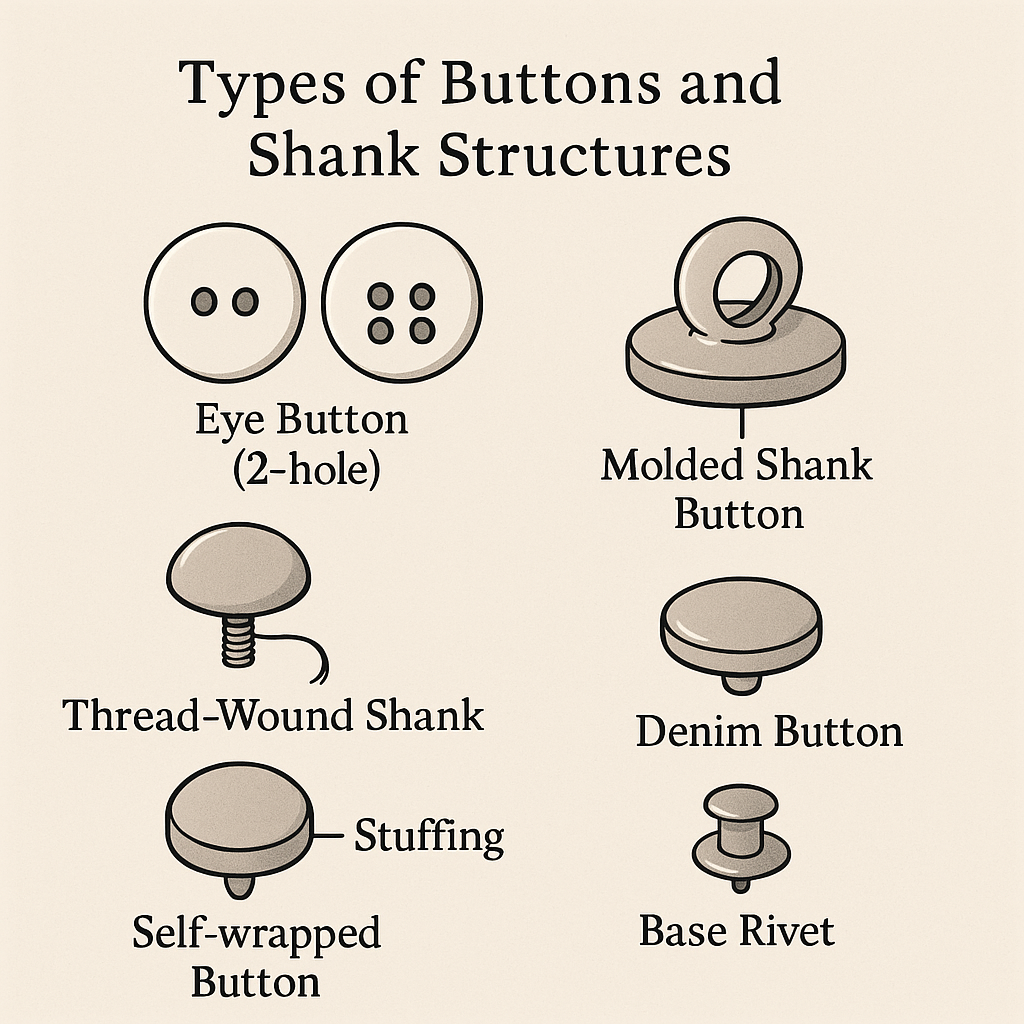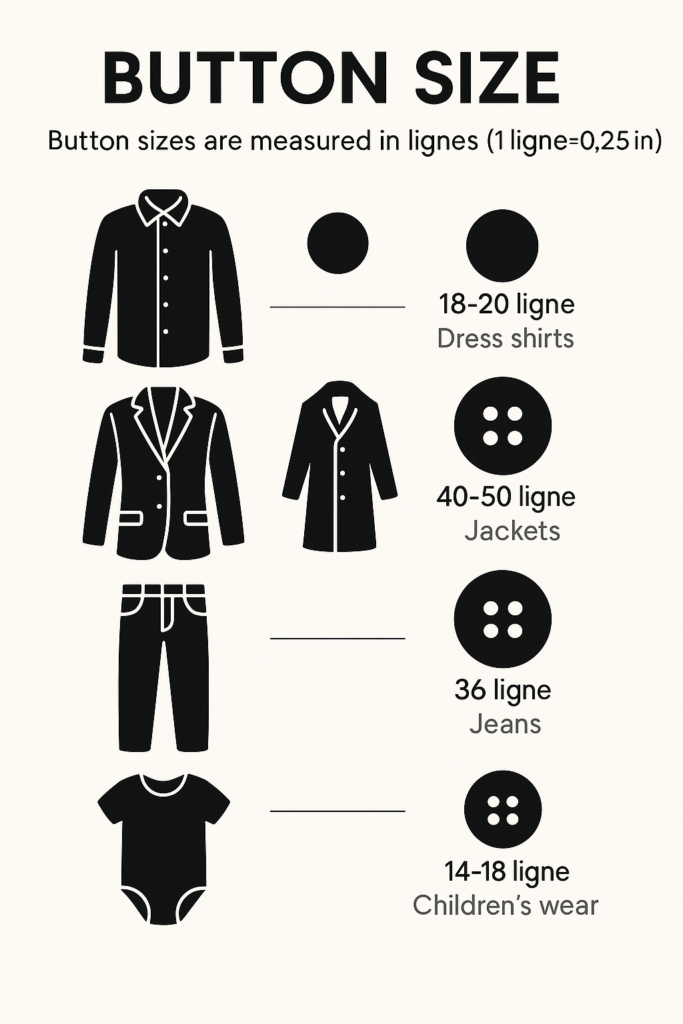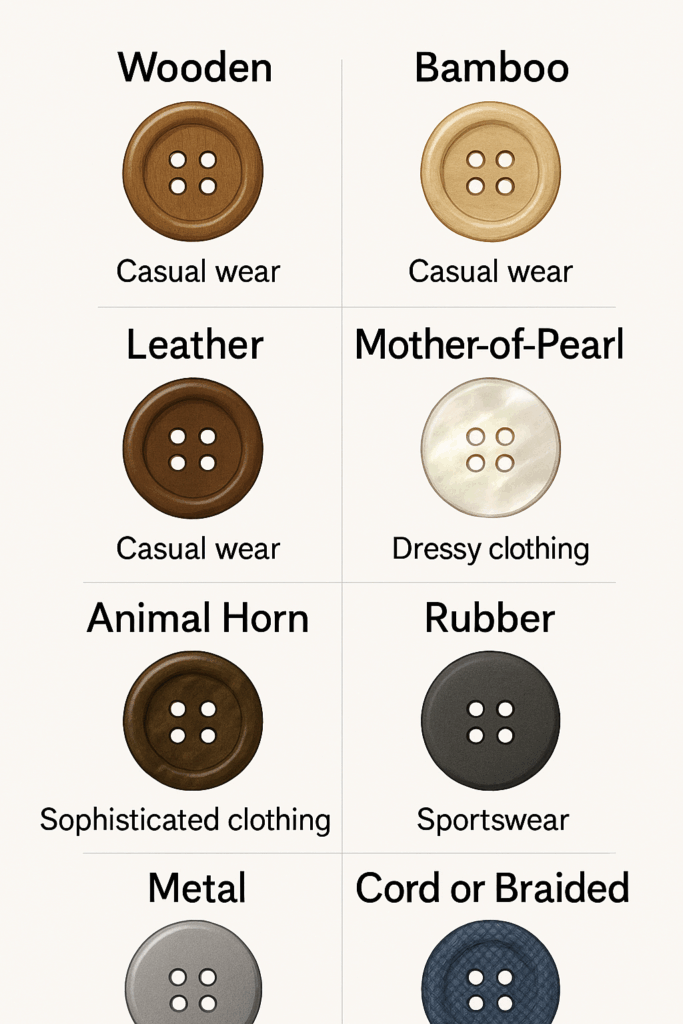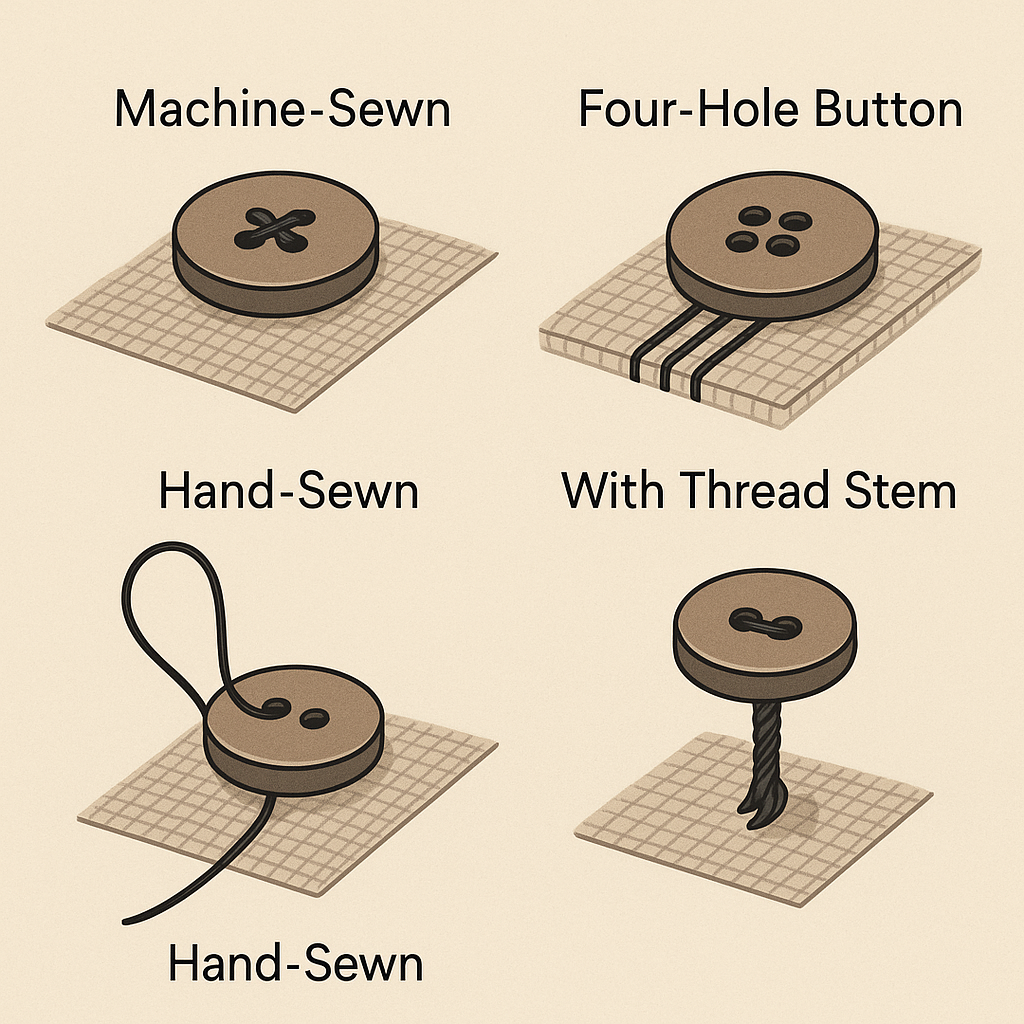🧵 Types of Buttons and Shank Structures in Garment Design
Buttons are more than fasteners — they’re integral to a garment’s aesthetics, comfort, and structure. From functional closures to decorative details, understanding button types and their attachment methods is essential in fashion production. This article explores eye buttons and shank buttons, their subtypes, and how to choose the right button for design and performance.
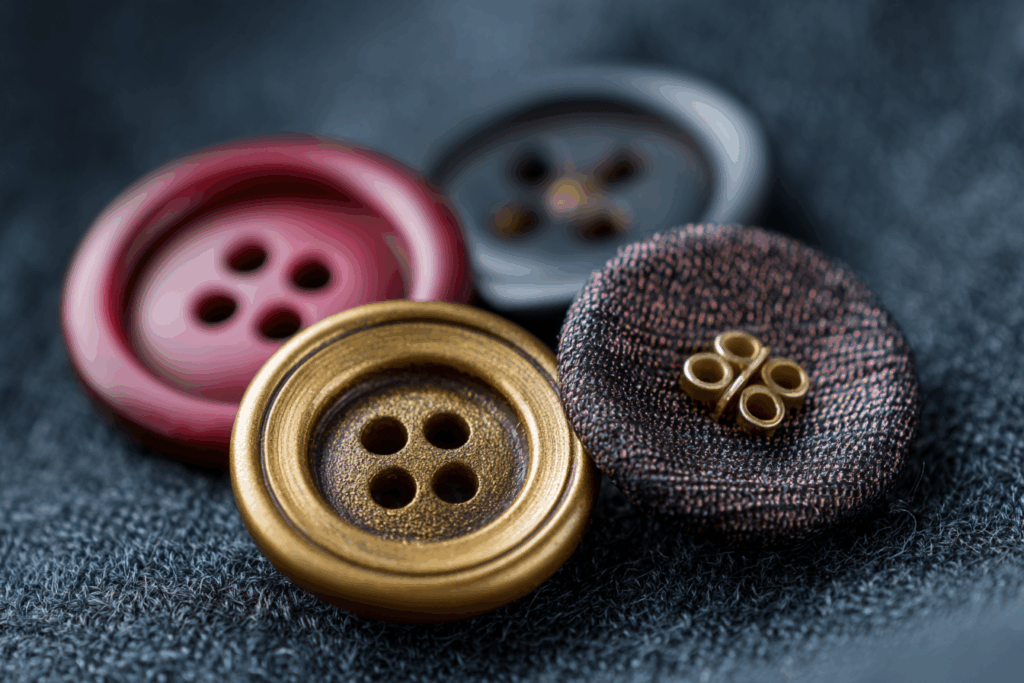
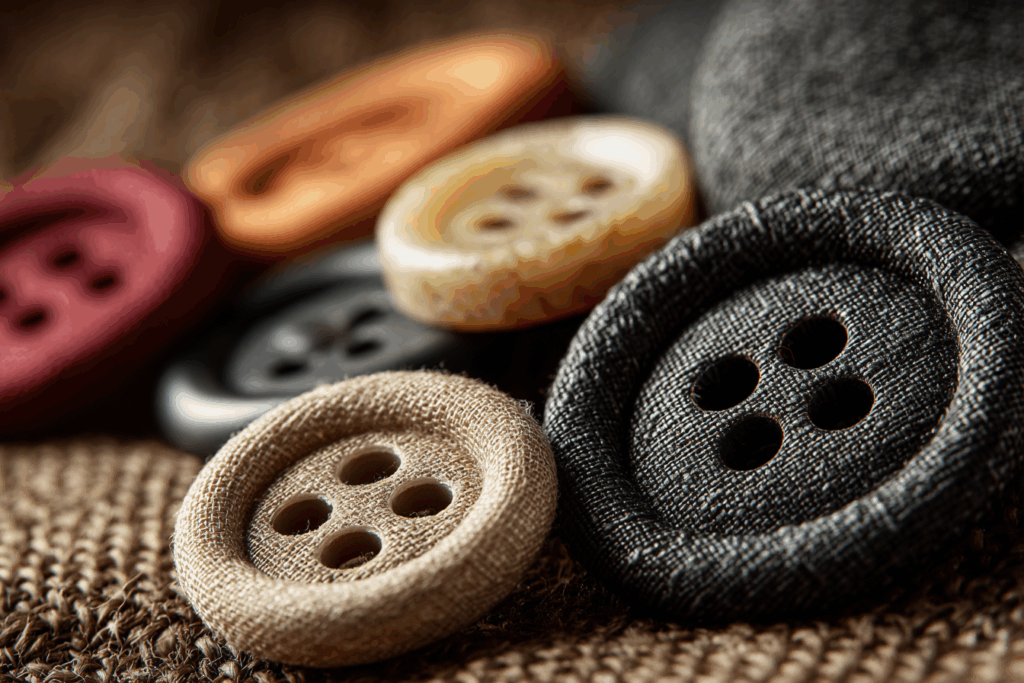
🔹 What Are Eye Buttons?
Eye buttons (also called sew-through buttons) are flat, disc-shaped buttons that are sewn through holes (or “eyes”) directly into the garment. These buttons lie close to the fabric, offering comfort and simplicity in both function and appearance.
✳️ Common Features:
- Flat and smooth surface
- Comfortable for daily wear
- Easy to sew on
- Ideal for lightweight garments
✳️ Typical Uses:
- Pajamas and loungewear
- Button-back pullovers
- Children’s clothing
✳️ Styles:
- 2-hole and 4-hole buttons: Most common and stable
- 3-hole buttons: Unique designs, slightly less common
- Novelty styles: Heart shapes, square holes, and decorative top stitching
🔸 What Are Shank Buttons?
Shank buttons have a protruding loop (or shank) behind the button, through which the thread passes. This loop elevates the button above the fabric, making it perfect for thicker materials or garments that require a more pronounced buttoning layer.
🧷 Advantages of Shank Buttons:
- Adds spacing between the garment and button
- Prevents fabric distortion
- Ideal for coats, jackets, and tailored pieces
- Hidden thread provides a clean, polished finish
🪡 Types of Button Shanks
1. Thread-Wound Shank (Eye Button Variant)
- Common for eye buttons
- Created by wrapping thread between the button and fabric
- Allows flexibility and reduces tension on the fabric
2. Molded Shank Buttons
- Loop is pre-formed as part of the button (metal, plastic, or resin)
- Strong and durable
- Often seen on blazers, uniforms, or outerwear
3. Self-Wrapped Buttons
- Fabric is filled and wrapped to create a shank-like structure
- Decorative, often used in couture or vintage garments
4. Denim Buttons
- Snap-together type with a metal base and cap
- Used in jeans, workwear, and heavy-duty garments
- No sewing required — attached with pressure or tool setting
🧵 Choosing the Right Button: Tips for Designers
| Design Consideration | Recommended Button Type | Why? |
|---|---|---|
| Soft fabrics (cotton, jersey) | Eye buttons (2 or 4-hole) | Flat and comfortable |
| Structured garments (jackets, blazers) | Shank buttons (molded or thread) | Adds dimension and prevents tension |
| Durable wear (jeans, uniforms) | Denim or metal shank buttons | Withstand high stress and wear |
| Decorative accents (dresses, blouses) | Self-wrapped or novelty buttons | Adds design flair |
🔍 Why Shank Height Matters
The height of the button shank influences how the button sits and whether the fabric bunches or distorts. Ideally:
- A too-short shank pulls fabric, causing puckering.
- A too-tall shank may wobble or sag.
- The perfect shank height allows the button to sit neatly above the garment layer with no strain on the fabric.
✅ Key Takeaways
- Eye buttons are simple, flat, and perfect for light garments.
- Shank buttons provide elevation, durability, and polish.
- The right button improves garment function, comfort, and design integrity.
- Always consider fabric thickness, stress points, and button use when choosing between button types.
